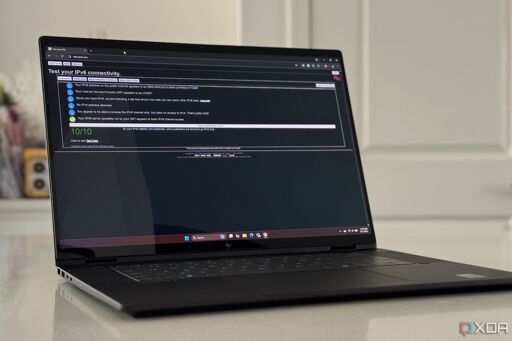I blocked all my IPv6 because android/Google would always force it’s own DNS on me. And I couldn’t find a reliable method without rooting the phone to turn this off.
Well i did find one, to disable IPv6 on the router. Is this a thing anyone else had or did i remember it wrong or not dig deep enough?For me, working DNS is just managing to connect to DNS-censored piracy sites. And just providing v4 and v6 IP adresses on the DNS field worked IIRC. Also you can use an actual DNS hostname managed to get sites to work.
IP being scarce is a business. It makes so IPS could charge outraging amounts of money for a stable exclusive IP. I do think many people don’t want to let the golden cow die. Specially if there’s a migration cost.
I think the fundamental problem with ipv6 is that it’s a bit more complex to learn than ipv4 and not universally deployed at the remote host/server level.
New cloud companies who want to be competitive have to purchase ipv4 blocks at significant cost reducing their ability to compete with the incumbent players.
So if you go 100% ipv6 at home, some percentage of the internet will be inaccessible to you unless you employ some workarounds.
We’ll drop ipv4 quite fast once everything is up on ipv6 because nearly every modern network enabled device supports it.
The only reason I think we’ve not gotten over the hump is because our alternatives are still easy enough to work with and nobody requires it.
Only if Chrome announces that the IPv6 version will be the default and the IPv4 version must be manually activated in the future.
All companies announce migration to IPv6
Huh? You know Chrome right now does ipv6 and iov4.
And ipv6 is the default when doing dual stack unless explicitly configured differently.
The goal today isn’t to make single stack IPv6 internet practical, it’s to make dual stack ubiquitous. Once that’s achieved, the cost differential, and the increasing technical burden of maintaining IPv4 hacks, will reach a tipping point where it’s relegated to legacy status, but this is at least a decade away, with likely another decade of inertial decay of public IPv4 after that.

It’s already happening. It’s teaching 50% of all Google traffic.
My ISP doesn’t provide IPv6, and with other ISP using CGNAT instead don’t think that IPv6 will be the main standard any time soon.
It’s more of “if it works, don’t fix it”, just apply workarounds like tunnelsIt’s reaching 50% of all traffic for Google. So I’d say next 5 years it becomes the dominate traffic.
They both have use cases and are interoperable. I don’t see why folks think it’s so odd that they are both used and will likely continue to be used. It’s hardly even a topic worth talking about. Seems like one of those things people hear about being around for a long time as an updated standard and it’s some kind of gotcha that not everything uses it…What driver do these people imagine exists to not use IPv4, the addressing limit was solved before IPv6 even hit the street and has only matured and integrated with IPv6 since.
The ip limit was not solved we had work around and even those work sounds have limits. How does a new country coming into the tech world latter then the west get iov4 addresses? When they are all depleted. I was in the very remote North and the cell carriers did not give any ipv4 to the devices.
Ok? That use case has been solved. You can still use private IPv4 addressing and everything will just work because carrier service providers have solved those limitations.
While moving away from IPv4 isn’t really pressing anymore, there are still avoidable annoyances in v4 land.
Just yesterday a friend and I had a lot of fun getting our laptops to connect to a public network. Why? Because IPv4 doesn’t have many private ranges and not only did the address of their captive portal conflict with the address space of a VPN we’re both in, the address of their DNS server also conflicted with the default address space my friend’s Docker setup operated in.
Figuring that out was a riot.
Yeah and I’ve worked for a company that stupidly put their vpn service on 192.168.1.0/24 so most peoples home network would act weird as hell whenever they connect to the work vpn. That’s a poor implementation and shouldn’t be done. Address conflicts are certainly annoying especially when it’s a black box but that’s not a reason to shoehorn everything over to IPv6. I can’t imagine a scenario ever existing that I would have any desire for everything in my house to be uniquely reachable to the world. I have a point of presence to the internet behind my Palo Alto, what I do inside there is incredibly simple with IPv4 and interoperates seamlessly with IPv6. This idea that everything needs to be raw dogging the internet, especially with the current state, or lack of, information security makes no sense to me. Talking about IPv6 not being fully implemented as some sort of critique is ignorant, shows a complete lack of use case analysis, usually erodes away after someone spends a year or so in the real world, and isn’t the gotcha folks seem to think it is.
yeah, I don’t see the benefits of moving to ipv6 outweighing the costs
What do you imagine the “cost” is?
I’ll paste a comment that illustrates it better than I could
Imagine this scenario - you’re a corporate with 1000 sites and maybe 5000 networking devices. You have a rolling replacement program for those devices as they become end of life, and as that progresses you reach a point where all of them can work with IPv6. So you switch off IPv4 and work only with IPv6.
Then your corporate acquires another entity, say consisting of 100 sites with 500 devices. All of those devices need checking that they can work on IPv6 and a significant number need replacing at maybe an average of £5000 per device. With IPv4 you can still integrate the legacy kit into your estate without swapping any of it out, with IPv6 only you can’t.
For an end user, a small startup, or similar sure go ahead and use IPv6, but there are significant obstacles for larger estates, which is one reason IPv4 isn’t going anywhere soon.
Hey guys, I deployed our servers on 10.0.0.0/14 and didnt’ bother with ipv6. Oh no! The company that we just acquired also deployed their servers on 10.0.0.0/14, so all of your assumption in your dumb-ass contrived scenario are invalidated.
ipv6 adoption only matters for public reach. Right now if you want a website accessible by 75% of the world, it has to be an ipv4 endpoint. Though that is changing. Here is a blog post by someone from akamai in 2018 talking about the rapid adoption of ipv6. https://www.akamai.com/blog/performance/six-years-since-world-ipv6-launch
Basically if you aren’t deploying a service as native ipv6, you’ve already fucked up.
Most competent IT departments would just set up bidirectional NAT.
https://www.juniper.net/documentation/us/en/software/session-smart-router/docs/config_static_nat/
Why would anyone switch off IPv4? That makes no sense and isn’t commonly done. You run dual stack in most cases – NAT v4 and straight v6. A lot of folks are using v6 on mobile phones without even realizing it because telcos ran the numbers years ago and realized it was cheaper to push v6 at the end user layer than run NAT and/or try to find v4 addresses on the transfer market. There’s been no unallocated pool of v4 space for almost a decade.
Yes that’s the odd part. Most people are using v6 daily without even realizing it.
was that comment written in 1996






